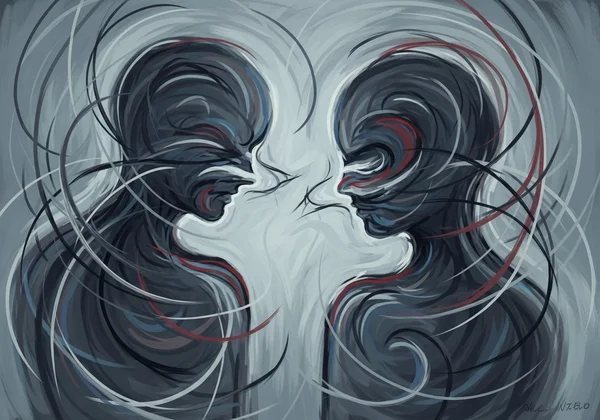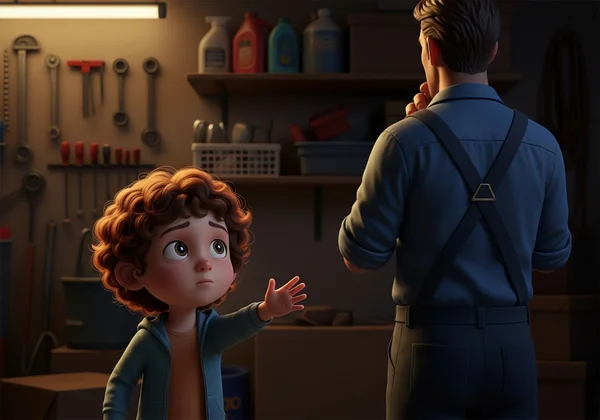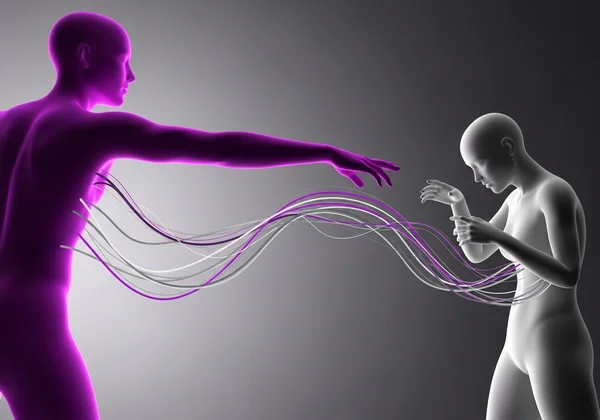Anxious Attachment Style Quiz: Signs, Causes, & How to Heal
Are you constantly seeking reassurance in relationships, fearing abandonment, or finding yourself caught in a cycle of push-pull dynamics? Do you often wonder, what is my attachment style and how does it impact my love life? Let's explore anxious attachment, a relationship pattern that often leaves individuals feeling insecure and misunderstood. We'll explore its origins, recognize its signs, and, most importantly, provide actionable strategies to heal and build healthier, more secure connections. Understanding your attachment style is the first step towards transforming your relationships and fostering true inner peace. Ready to start your journey? You can discover your style with our free attachment style quiz.

Recognizing Anxious Attachment Signs
Identifying the signs of anxious attachment is crucial for self-awareness. This style often manifests as a deep-seated fear of abandonment, leading to a constant need for closeness and validation from partners. Individuals with this style might struggle with trusting their partner's love or commitment, even when evidence suggests otherwise.
Common Emotional & Behavioral Patterns
Insecurity often manifests in a range of behaviors for people with anxious attachment signs. They might be overly preoccupied with their relationships, constantly analyzing interactions and searching for signs of rejection. This can lead to what's known as "protest behavior," such as calling or texting excessively, trying to evoke a response, or becoming overly clingy. They may feel very jealous or possessive, fearing their partner will leave them for someone else. This persistent worry can make them highly reactive to perceived slights or changes in their partner's mood, often escalating minor issues into major conflicts. Taking a detailed attachment style quiz can help you identify these patterns.
The Inner Experience: What It Feels to Be Anxiously Attached
Beyond outward behaviors, the inner world of someone with an anxious attachment can be tumultuous. There's often a gnawing feeling of not being "enough" or deserving of love, leading to a constant need for external validation. This intense inner turmoil can feel like a rollercoaster of emotions, from deep longing and desperation for connection to sudden shifts into anger or despair when needs aren't met. It’s a perpetual state of worry about the relationship's stability. Understanding this inner landscape is a key part of personal growth. To gain deeper insight into these feelings, consider taking a comprehensive attachment style test.

The Roots of Anxious Attachment
Understanding the origins of your attachment style provides context for your current relational patterns. Anxious attachment doesn't simply appear; it's often shaped by early life experiences and can be reinforced by later significant relationships.
How Early Experiences Shape Anxious Patterns
The foundation of our attachment style is typically laid in childhood, through our interactions with primary caregivers. If caregivers were inconsistent in their responsiveness—sometimes warm and attentive, sometimes distant or preoccupied—a child might learn that love is unpredictable and that they must work hard to gain attention and affection. This inconsistent care can foster a deep-seated anxiety about whether their needs will be met, leading to an anxious relationship dynamic in adulthood. This early conditioning creates a blueprint for how individuals view intimacy and their worthiness of love.

Life Events & Relationships That Can Trigger or Reinforce It
While early experiences are formative, later life events and adult relationships can also trigger or reinforce an anxious attachment style. Experiencing a painful breakup, betrayal, or a series of unfulfilling relationships can deepen existing insecurities. These experiences can confirm the belief that relationships are unreliable and that abandonment is always a threat, intensifying the need for constant reassurance. Understanding these triggers is vital for healing. Our free attachment style quiz can help you explore these connections.
Anxious Attachment in Relationships
Anxious attachment profoundly impacts how individuals navigate their intimate partnerships. It creates unique challenges that can lead to misunderstandings and recurring conflict.
The Cycle of Pursuit and Fear in Intimacy
In relationships, the anxiously attached person often enters a "pursuit" cycle. They may constantly seek closeness and reassurance, fearing their partner will leave. This pursuit can sometimes feel overwhelming to their partner, who might then withdraw, inadvertently triggering the anxiously attached individual's deepest fears of abandonment. This creates a painful push-pull dynamic, where one pursues and the other distances, making genuine intimacy difficult. This anxious relationship pattern can be exhausting for both individuals involved.

Communication Challenges & Conflict Management
Communication can be a primary challenge for those with an anxious attachment. They may struggle to express their needs directly, instead resorting to indirect methods or passive-aggressive behaviors to gain attention. During conflicts, their fear of abandonment can lead to emotional escalation, difficulty regulating their emotions, and a tendency to "protest" or demand immediate resolution, often feeling unheard or unloved. Understanding these challenges is the first step toward healing anxious attachment and fostering healthier interactions. To learn more about how your style affects your relationships, consider taking a comprehensive love attachment style quiz.
Healing Anxious Attachment: Practical Steps
Healing anxious attachment is a journey of self-discovery and intentional practice. It’s about building inner security and transforming how you engage in relationships. While challenging, significant positive change is absolutely possible.
Cultivating Self-Awareness & Inner Security
The first step in healing is developing strong self-awareness. This involves recognizing your triggers, understanding the underlying fears that drive your reactions, and learning to soothe yourself. Practices like journaling, mindfulness, and self-compassion can help you identify when old patterns are emerging. Instead of seeking all your security from your partner, learn to provide it for yourself. A good way to start this journey is to take a science-based free attachment style quiz to pinpoint your tendencies.

Mastering Secure Communication
Effective communication is the cornerstone of healthy relationships. For those with anxious attachment, this means learning to articulate needs clearly and calmly, without blame or demand. Practice expressing your feelings directly, using "I" statements ("I feel concerned when...") rather than "you" statements ("You always..."). Learn to set healthy boundaries and respect those of your partner. This shifts the dynamic from a desperate plea for reassurance to an empowered request for connection.
Rebuilding Trust & Managing Relationship Triggers
Healing also involves rebuilding trust – both in yourself and in the relationship. This is a gradual process. When triggers arise (e.g., your partner is late or distant), instead of immediately reacting from fear, pause. Acknowledge the feeling, but consciously choose a different response. Communicate your feelings calmly, and work with your partner to build new, secure patterns of interaction. It's about demonstrating to yourself that you can handle discomfort and that your partner is not abandoning you. Understanding your individual relationship patterns can be incredibly insightful, and our online attachment style quiz free is a great starting point.
When Professional Support Can Help
While self-help strategies are powerful, sometimes professional support is invaluable. A therapist specializing in attachment theory can provide a safe space to explore the roots of your anxious attachment, process past experiences, and teach you coping mechanisms. They can also help you develop secure relational skills within a therapeutic relationship. This is especially helpful if your patterns are deeply ingrained or if you find yourself unable to make progress alone. Remember, seeking help is a sign of strength, not weakness.
Your Journey to Secure Connection Starts Here
Understanding your anxious attachment is a profound step towards transforming your relationships and building lasting inner security. It's a testament to your courage and commitment to growth. The journey to a more secure attachment style is deeply empowering, enabling you to foster healthier connections based on trust, open communication, and mutual respect. Remember, attachment styles are not rigid labels but dynamic patterns that can evolve with self-awareness and effort.
Ready to gain personalized insights into your relationship patterns? Take the first step today. Our free, science-based attachment style quiz is designed to help you discover your unique style and offers initial valuable insights. For a deeper dive, consider our optional AI-driven personalized report, which provides comprehensive analysis and actionable steps tailored just for you. Explore your patterns, understand your needs, and start building the secure relationships you deserve.
Frequently Asked Questions About Anxious Attachment & Healing
Can an anxious attachment style truly be healed or changed?
Absolutely! Anxious attachment is a learned pattern, and like any learned behavior, it can be unlearned and transformed. While it takes self-awareness, consistent effort, and often patience, moving towards a more secure attachment style is entirely possible. It involves internal work to regulate emotions, building self-worth, and practicing new, healthier ways of relating in partnerships. Many people successfully transform their attachment patterns throughout their lives.
What is the main difference between anxious and secure attachment?
The main difference lies in inner security and trust. Individuals with an anxious attachment style often experience a fear of abandonment, a constant need for external validation, and high relationship anxiety. In contrast, those with a secure attachment style feel comfortable with both intimacy and independence. They trust their partners, feel confident in their own worth, and can regulate their emotions more effectively, leading to balanced and resilient relationships.
Does everyone with anxious attachment have childhood trauma?
Not necessarily. While childhood experiences with inconsistent caregiving often contribute to anxious attachment, it's not always linked to severe trauma. It can stem from more subtle dynamics, like caregivers who were loving but sometimes emotionally unavailable, or parents who themselves struggled with anxiety. Furthermore, significant adult relationships or life events can also trigger or reinforce these patterns, even if early childhood was relatively stable. To better understand your own developmental patterns, try our attachment style quiz.
How long does it take to heal an anxious attachment style?
The timeline for healing anxious attachment varies greatly for each individual. It's a continuous process of self-discovery and practice, rather than a quick fix. Some people may see significant improvements in a few months with dedicated effort, while for others, it might be a longer journey spanning years. Consistency in self-reflection, practicing new communication skills, and potentially engaging in therapy are key factors that influence the pace of change. Every small step towards self-awareness and secure relating is progress.